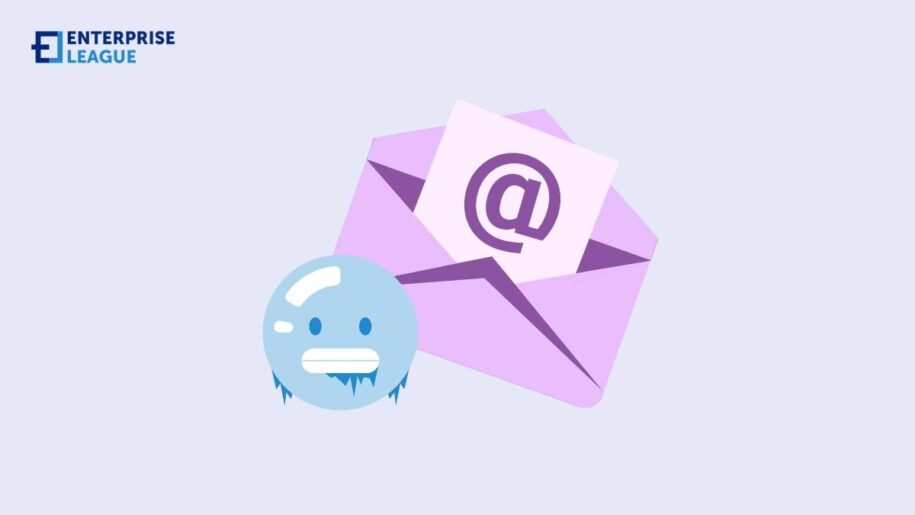Receiving a response from someone by email is always like finding a surprise gift in your digital mailbox. These cold email responses are what prospects send when they’re intrigued or interested. Companies use cold emails to introduce their product or pitch their idea to new people. But only some emails get responses. Have you ever wondered why? This article explores the psychology behind the recipients’ responses in detail.
9 Simple Yet Effective Parameters To Understand Recipient Behaviour
There are several important parameters to understand to increase the count of your cold email responses.
The Curious Beginning: A Subject Line That Speaks
Think of cold email responses as a game full of curiosity. The first move will be your subject line. The more catchy and exciting your subject line is, the better. That’s because it will hook the recipient and create a reason to open your email and respond. If you’re a SaaS company, avoid saying, “We offer software solutions” in the subject line. It’s vague and not catchy at all. Instead, try writing, “ Ready to supercharge with our customised software solutions?” This will get you a higher response rate immediately.
It’s All About The Recipient: Personalisation
A successful cold email speaks directly to your needs. Think of it as a message that understands your challenges and offers practical solutions. Your emails need to make the prospect feel as if it is explicitly written, keeping them in mind. You should create effectively personalised emails if you’re a company with technology solutions. Here’s an example:
“Empowering tech wizards like you to overcome obstacles.”
Recommendation Power: Friends In Unfamiliar Places
If you found five different products on the internet and your friend recently recommended one of them, which would you buy? You’d go with the one your friend suggested, right? The same applies to cold email responses too. Share stories of how well your product worked for other companies in a similar niche as your client. You’ll gain credibility quickly if your client understands that an industry leader recommends your services.
Making It Easy: Small Steps, Big Impact
Cold email responses are often short and crisp. Companies don’t pitch heavily in their response emails. They start off easy and take small steps to create a significant impact for the client. For instance, you could start with, “Can you spend 5 minutes looking at our tech insights that can save you an hour every day?” Including short, impactful messages in your response emails is a win-win strategy all major companies follow.
FOMO: The Action Pusher
Everyone gets worried if they feel like they’re missing something fun and interesting. Response emails utilise this tactic to drive client action. Fear encourages action. This is the only psychology behind FOMO effectively increasing response rates. Give them access to exclusive information for a limited amount of time. You can also make the availability limited using different ways. Write something like,
“Join an exclusive group of 1000 tech enthusiasts who’ll get access to insider updates with [program name].”
Also Read: The Power Of Personalisation In Cold Email Campaigns
Perfect Timing: Reaching When You’re Ready
Things happening at the exact time they should is highly satisfying. Hence, the same goes for emails as well. People are more alert during certain times of the day than others. Utilise this to your advantage and reach people when they’ll most likely respond. A data-driven approach will be your best friend here. Gather user data and understand the patterns in them. Now, orient your cold email strategy to the time frame that’s green-flagged by the data. This is good enough to increase your cold email responses.
Cultivating Trust: Showcasing Credibility
We tend to trust things that are generally proven to be good. In your cold email responses, highlight awards or any recognition received for the product you’re selling. Include positive reviews or testimonials as well. Any social proof that shows you’re one to trust will work. Also, show how you’ll help your client achieve the results you’ve promised them.
Tailored Just For You: The Personal Touch
Greet your users based on an interest or hobby they have. You can observe and analyse user data for such trinkets of information that’ll prove helpful. Suppose your client watched a particular movie recently. You could open with a line that references some lines from that movie. This will humanise your email and maximise the chances of getting cold email responses.
Learning The Art Of Data
Emotions can connect the prospect with you at a personal level. But to emote correctly, you’ll need data. Contrary to popular belief, customers like showing them you know them. They’ll respect the time you spent researching and personalising your interaction with them. Use data to your advantage using A/B testing as well. Sometimes what may seem like a great idea could turn out underwhelming in A/B tests. That’s why it’s essential to test before finalising and applying the insights you’ve derived.
Conclusion
You can solve the mystery behind cold email responses easily if you consider them puzzles. Companies design these puzzles to grab prospects’ attention and introduce their products quickly. These emails include clever techniques that intrigue and speak to your needs. Every cold email is a hidden opportunity waiting to be discovered. Now that you know the psychology of a cold email recipient, you can write better emails. Remember the points we’ve detailed here while crafting your campaigns to stand out from the herd and emerge as a true winner.
Follow Zohort for more updates.


